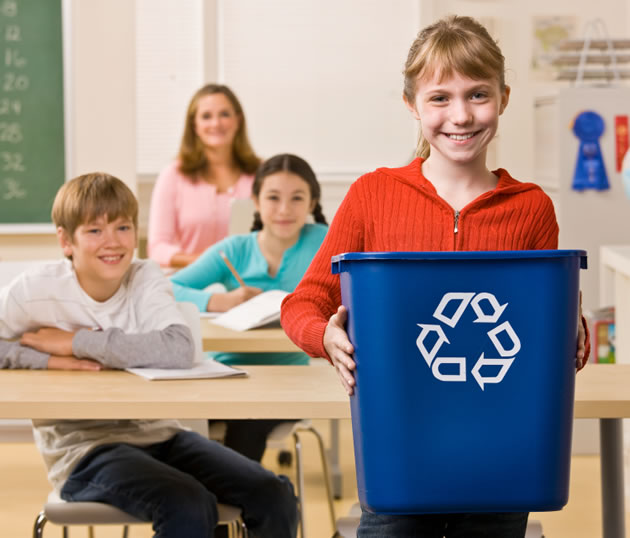
If your school or campus does not have a recycling program in place, have no fear! This only means it is the perfect time to step up and start one yourself. While it may seem overwhelming to implement a recycling program on your own, once you start the process it will inspire others to join your cause. Here are a few helpful steps to take to start your own recycling program.
Gather your troops
Start an environmental group on your campus to mobilize like-minded peers. Once you have found a few green friends to join your group, spark interest among other students by talking the talk and walking the walk. Stop throwing away paper on campus, and ask computer lab staff, librarians and teachers if they mind adding a recycling bin to see how many students use it instead of the wastebasket. Since there is not a recycling program in place, you may have to take responsibility yourself by collecting recycling and transporting it to a recycling facility.
Get the facts
Find out how much your school is wasting by not recycling. If you collect recycling on your own from even a portion of the campus (including paper, plastic bottles, aluminum cans, etc.), document what you collect accurately and often. Taking pictures and/or video can add visuals to your case, which can further the effectiveness of your project. After obtaining permission from the school, you could even do an inventory of wasted food from the cafeteria or food court. Could you use the food stats to start a school compost program? Could the extra food be donated to a local charity or food bank? Take a poll or start a petition to show how many students and faculty are in support of a recycling program.
Present findings professionally and logically
Schedule a meeting with relevant school officials. If you are not sure who to talk to, ask your school’s guidance counselor, the school secretary, your principal or a respected teacher. How many times have you prepared PowerPoint presentations for topics in school? Use your knowledge and creativity to present your findings in a logical way. Show not only how recycling and reducing waste would benefit the environment, but also how it would benefit your school. Examine possible tax incentives and government aid by implementing a recycling program, donating food to local food banks and upgrading to energy-efficient products. Use numbers, graphs, student and faculty testimony and environmental impact to state your case. Come up with a clear plan for recycling, such as providing paper recycling bins in classrooms, plastic and aluminum recycling bins in hallways, and one electronic recycling bin in a common space on your school campus.
If you want to implement a recycling program, map out your plan carefully and use your resources. Ask parents, friends, teachers and local environmental groups for help. The rewards will be more than worth the effort. Check out tips from
DoSomething.org and the
EPA to begin a strong recycling program at school that will last long after you graduate.
 If your school or campus does not have a recycling program in place, have no fear! This only means it is the perfect time to step up and start one yourself. While it may seem overwhelming to implement a recycling program on your own, once you start the process it will inspire others to join your cause. Here are a few helpful steps to take to start your own recycling program.
If your school or campus does not have a recycling program in place, have no fear! This only means it is the perfect time to step up and start one yourself. While it may seem overwhelming to implement a recycling program on your own, once you start the process it will inspire others to join your cause. Here are a few helpful steps to take to start your own recycling program.
 If your school or campus does not have a recycling program in place, have no fear! This only means it is the perfect time to step up and start one yourself. While it may seem overwhelming to implement a recycling program on your own, once you start the process it will inspire others to join your cause. Here are a few helpful steps to take to start your own recycling program.
If your school or campus does not have a recycling program in place, have no fear! This only means it is the perfect time to step up and start one yourself. While it may seem overwhelming to implement a recycling program on your own, once you start the process it will inspire others to join your cause. Here are a few helpful steps to take to start your own recycling program.